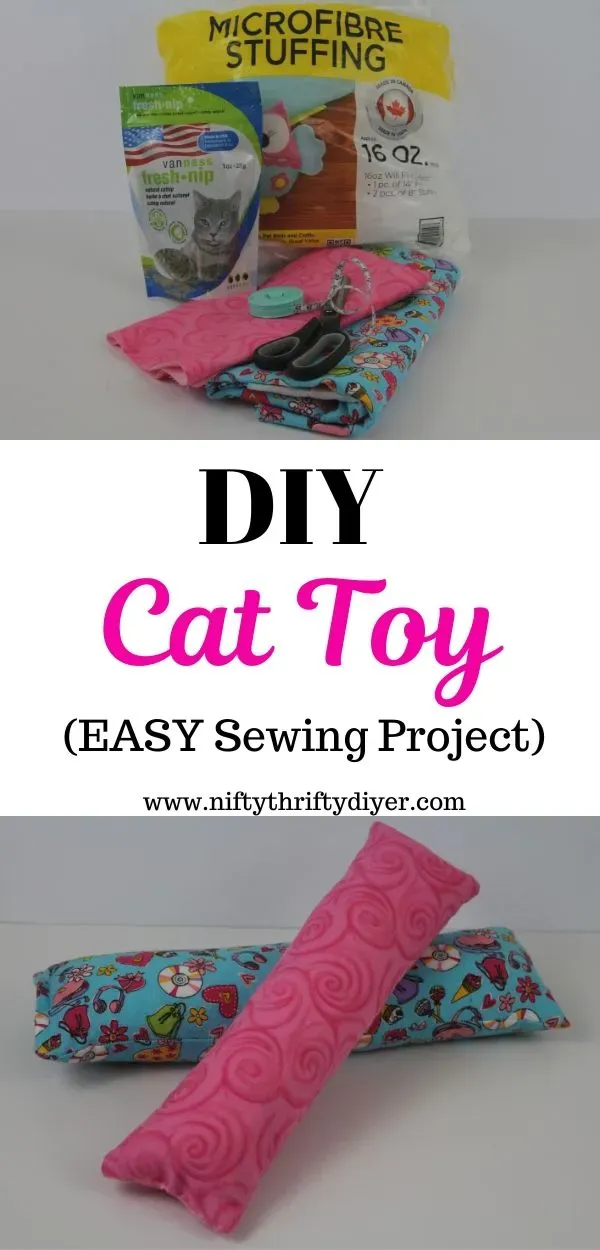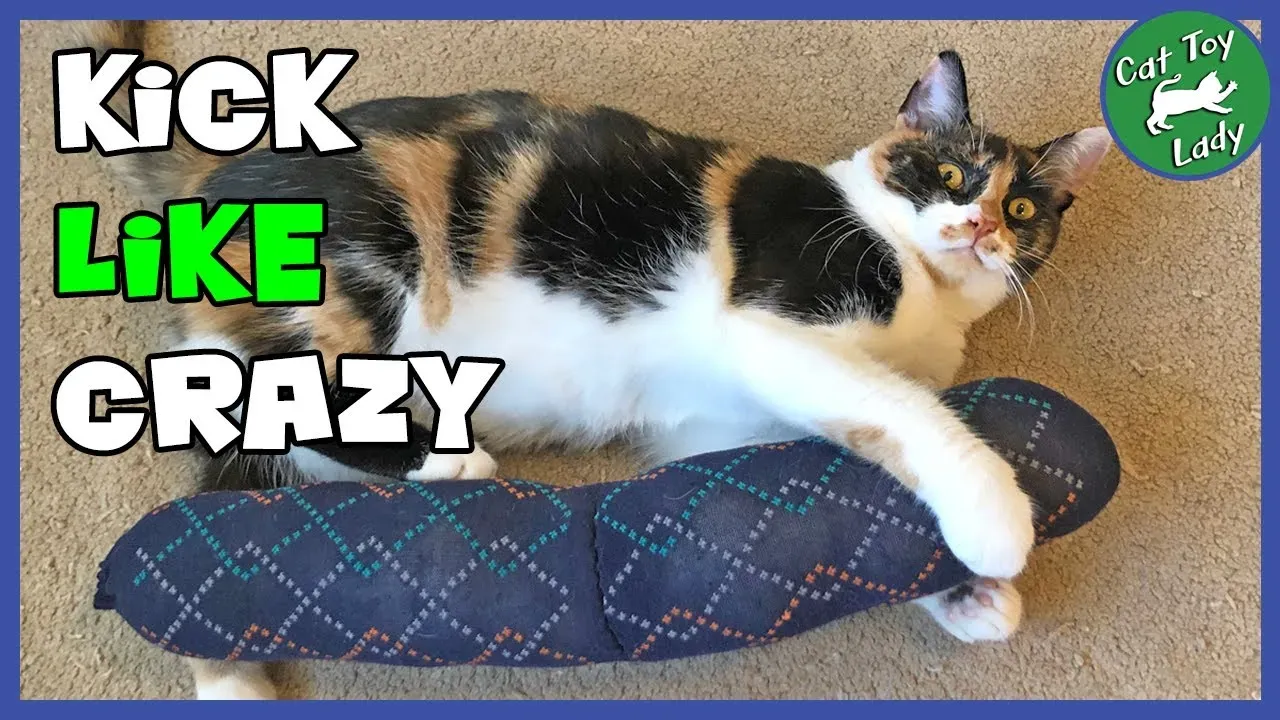Table of Contents
Let's be real. Your cat probably has a box full of toys it ignores, right? The expensive plush mouse? Gathering dust. The fancy laser pointer? Only interesting for five seconds. Meanwhile, your couch looks like it lost a fight with a shredder, and your ankles bear the marks of a hunter deprived of proper prey. Cats need to satisfy their natural instincts to stalk, pounce, and, perhaps most importantly, bunny-kick the stuffing out of something. That's where a good kicker toy comes in. Store-bought versions can be pricey, and honestly, half the fun is making something your cat might actually use. This guide walks you through creating a simple, effective diy cat kicker toy. We'll cover what you need, the straightforward steps to put it together, how to make it special for your specific feline overlord, and crucially, how to keep it safe. Get ready to trade those shredded couch corners for a happily exhausted kitty.
Why Your Cat Craves a Kicker Toy

Why Your Cat Craves a Kicker Toy
Instinct Drives the Hunt
Think about your cat not just as a furry roommate, but as a tiny, efficient predator. Their ancestors hunted small prey – mice, birds, things that darted and wiggled. This primal programming doesn't just vanish because they get kibble on demand. Cats have an innate drive to stalk, chase, and ultimately, subdue their "prey."
They practice these moves constantly, whether it's batting at a dust bunny, ambushing your feet under a blanket, or staring intently at a fly on the wall. A good toy taps into this deep-seated urge. It's not just play; it's instinct in action, a necessary outlet for their energy and predatory skills.
The Mighty Bunny Kick
You've seen it. They grab a toy (or your arm, if you're unlucky), latch on with their front paws and teeth, and unleash a rapid-fire barrage with their back legs. That's the "bunny kick." It's a crucial part of their predatory sequence, used to disable or kill prey once they've captured it.
This isn't just cute behavior; it's functional. It engages their core muscles, hones coordination, and releases a ton of pent-up energy. Without a proper target for this powerful move, they might turn to things you'd rather they didn't, like furniture legs or your innocent appendages.
- Cats are natural hunters, hardwired for stalking and pouncing.
- The "bunny kick" is a vital predatory behavior.
- Kicking uses core strength and coordination.
- Satisfying this instinct prevents destructive behavior.
Satisfying the Urge Safely
This is where a specifically designed kicker toy shines. It's long and cylindrical, the perfect shape for a cat to grab with their front paws and wrap their back legs around. Unlike a small mouse toy they just bat around, a kicker toy is built for that full-body takedown.
Giving your cat a dedicated diy cat kicker toy means they have an appropriate target for their hunting and kicking instincts. It provides mental stimulation, physical exercise, and helps prevent boredom and frustration that can lead to scratching where they shouldn't or becoming overly aggressive during play. It's an investment in their well-being and your furniture's longevity.
Gathering Materials for Your DIY Cat Kicker Toy

Gathering Materials for Your DIY Cat Kicker Toy
Fabric Scraps and Sturdy Stuff
Alright, let's talk materials for your diy cat kicker toy. You don't need to hit the fancy fabric store for this. Dig through your scrap bin. Old jeans, sturdy cotton fabric from a previous project, maybe even a canvas tote bag that's seen better days. The key here is durability. Your cat is going to grab, bite, and kick this thing with surprising force. Avoid anything too flimsy that will shred instantly, or anything with loose threads or embellishments that could be chewed off and swallowed. Think tough textures they can really sink their claws into without immediately destroying the toy.
Stuffing and the Goodies
For the stuffing, plain polyester fiberfill works perfectly. You know, the stuff you use for pillows or stuffed animals. Just make sure it's new and clean, not something that's been sitting in a damp garage. Now, for the magic: catnip. Use dried catnip or even silvervine powder if your cat is indifferent to standard catnip. A little goes a long way, but enough to make it appealing. Some cats also love crinkle sounds. You can tuck in a piece of crinkle material (like from a clean potato chip bag or a specific pet-safe crinkle fabric) before you stuff it. This adds another layer of sensory engagement for their hunting brains.
- Durable fabric (denim, canvas, thick cotton)
- Polyester fiberfill stuffing
- Dried catnip or silvervine
- Optional: Crinkle material
- Needle and sturdy thread
- Scissors
StepbyStep Guide to Making Your DIY Cat Kicker Toy

StepbyStep Guide to Making Your DIY Cat Kicker Toy
Cutting and Sewing the Tube
you've got your sturdy fabric and your supplies ready for your diy cat kicker toy. First things first, cut your fabric. A good size for a kicker toy is usually about 10-12 inches long and 6-8 inches wide. This gives you enough length for the cat to really wrap their body around it. Fold your fabric in half lengthwise, right sides together. Now, grab your needle and thread. You're going to sew along the long edge and one short edge, leaving the other short edge open. Use a strong stitch here – remember, this thing is going to take a beating. A simple running stitch reinforced with a backstitch every so often works well, or if you're fancy with a machine, a straight stitch and maybe a zigzag for extra durability.
Stuffing and Sealing the Deal
Once you've sewn two sides, turn the fabric tube right side out. Now comes the fun part: stuffing your diy cat kicker toy. Grab your polyester fiberfill and start pushing it into the tube. Don't under-stuff it; you want it firm enough to hold its shape but still a little squishy for optimal kicking. As you stuff, sprinkle in your dried catnip or silvervine. Layer the stuffing and catnip to distribute the magic throughout the toy. If you're adding crinkle material, push that in now too. Once it's stuffed to your liking, fold in the raw edges of the open end and carefully sew it shut. Make sure this seam is extra secure – this is often the first point of failure when a determined kitty gets to work.
Step | Action | Notes |
|---|---|---|
1 | Cut Fabric | 10-12 inches long, 6-8 inches wide |
2 | Fold & Sew | Fold lengthwise, right sides together; sew long edge and one short edge. |
3 | Turn Out | Flip the tube right side out. |
4 | Stuff & Add Goodies | Fill with fiberfill, layering catnip/silvervine and crinkle material. |
5 | Close Opening | Fold in raw edges and sew shut securely. |
Customizing and Keeping Your Homemade Kicker Toy Safe

Customizing and Keeping Your Homemade Kicker Toy Safe
Making It Their Own
So, you've sewn up a basic diy cat kicker toy. Nice work. But let's face it, cats are finicky creatures. What one cat adores, another will eye with suspicion usually reserved for the vacuum cleaner. This is where customization comes in. Does your cat go nuts for feathers? Sew a few securely onto the ends, ensuring they are firmly attached and not easily pulled off. Some cats love dangly bits; a sturdy fabric loop or a piece of braided fabric securely sewn on can add extra interest for batting. Consider the texture too. If you used plain cotton, maybe add a patch of faux fur or corduroy. The goal is to make this specific diy cat kicker toy irresistible to your particular feline overlord, tapping into whatever textures or motions they seem to prefer.
Safety First, Always
Making a toy is great, but safety isn't optional. When crafting your diy cat kicker toy, avoid small parts that can be chewed off and swallowed – think buttons, plastic eyes, or loose ribbons. These are choking hazards, plain and simple. Use strong, durable thread and stitch everything tightly. Check seams regularly for signs of wear and tear. If the fabric starts to rip or stuffing pokes out, it's time for repairs or, more likely, retirement. A well-loved toy is great, but a shredded one is a risk. Don't fill it with anything toxic, obviously – stick to pet-safe materials like fiberfill and pure catnip. No essential oils unless they are specifically formulated and proven safe for cats, and even then, use extreme caution.
- Avoid small, chewable parts (buttons, plastic eyes).
- Use strong thread and secure stitches.
- Regularly inspect the toy for damage.
- Repair or discard damaged toys immediately.
- Use only pet-safe stuffing and catnip.
Monitor and Replace
Once you present your magnificent diy cat kicker toy, watch your cat interact with it. Some cats are gentle giants, others are furry wrecking balls. Pay attention to how they play. Are they trying to ingest the fabric? Are they tearing seams apart within minutes? This feedback tells you if your materials or construction need tweaking, or if this particular toy isn't suitable for their play style. Remember, no toy lasts forever, especially one designed to be enthusiastically kicked and bitten. Think of homemade toys like consumables. When it starts looking ragged, losing its stuffing, or becoming a potential hazard, don't hesitate to toss it and make a new one. It's a small price to pay for your cat's safety and continued entertainment.
Your Cat's New Favorite Toy (Probably)
So there you have it. Crafting a diy cat kicker toy isn't rocket science, thankfully. It's a simple project that can bring a surprising amount of joy (and tired-out satisfaction) to your feline companion. You've saved a few bucks, repurposed some materials, and given your cat a proper outlet for those powerful back legs. Watch them go to town on their new favorite target, and maybe, just maybe, your furniture will thank you. If not, well, at least you tried, and they look adorable doing it.